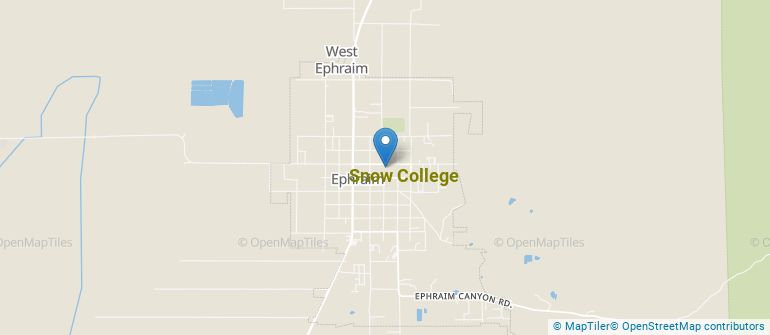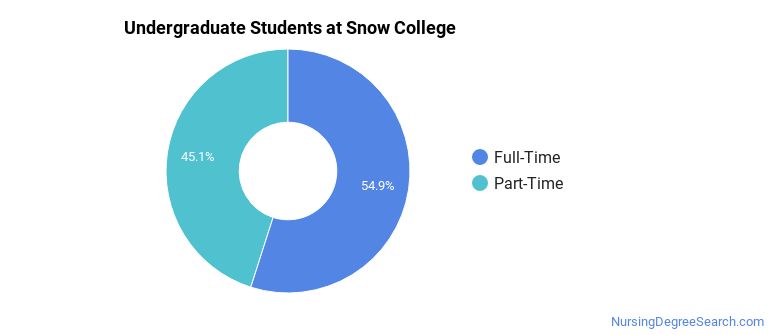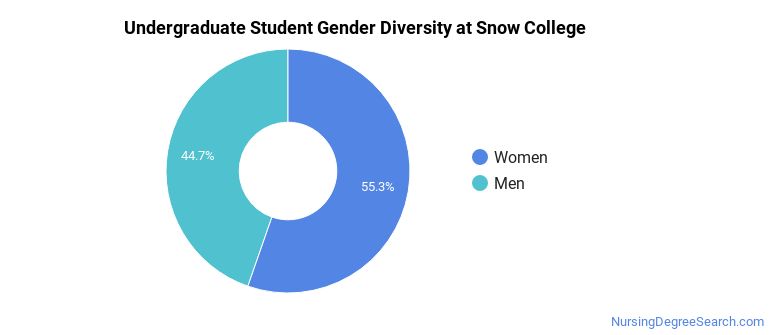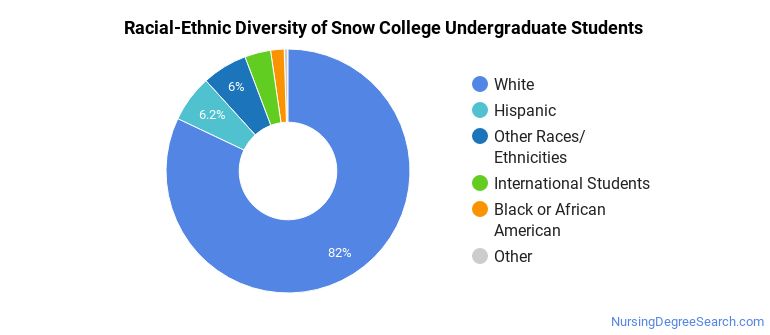Snow College Nursing Programs
Located in Ephraim, Utah, Snow College is a public institution. The location of Snow College is a good match for students who are interested in living in a college town while they pursue their degree.
Where Is Snow College?

Contact details for Snow College are given below.
| Contact Details | |
|---|---|
| Address: | 150 E College Ave, Ephraim, UT 84627 |
| Phone: | 435-283-7000 |
| Website: | www.snow.edu |
How Do I Get Into Snow College?
You can apply to Snow College online at: https://apply.snow.edu/
Can I Afford Snow College?
Student Loan Debt
While almost two-thirds of students nationwide take out loans to pay for college, the percentage may be quite different for the school you plan on attending. At Snow College, approximately 70% of students took out student loans averaging $1,039 a year. That adds up to $4,156 over four years for those students.
Snow College Undergraduate Student Diversity

Gender Diversity
Of the 3,186 full-time undergraduates at Snow College, 45% are male and 55% are female.

Racial-Ethnic Diversity
The racial-ethnic breakdown of Snow College students is as follows.

| Race/Ethnicity | Number of Grads |
|---|---|
| Asian | 16 |
| Black or African American | 57 |
| Hispanic or Latino | 198 |
| White | 2,614 |
| International Students | 110 |
| Other Races/Ethnicities | 191 |
Geographic Diversity
Utah students aren't the only ones who study at Snow College. At this time, 30 states are represented by the student population at the school.
Over 45 countries are represented at Snow College. The most popular countries sending students to the school are Japan, China, and Ecuador.
Snow College Nursing Concentrations
The table below shows the number of awards for each concentration.
| Major | Basic Certificate | Associate’s | TOTAL |
|---|---|---|---|
| Nursing Assistant/Aide and Patient Care Assistant/Aide | 104 | 0 | 104 |
| Registered Nursing | 0 | 54 | 54 |
| TOTAL | 104 | 54 | 158 |
References
*The racial-ethnic minorities count is calculated by taking the total number of students and subtracting white students, international students, and students whose race/ethnicity was unknown. This number is then divided by the total number of students at the school to obtain the racial-ethnic minorities percentage.
More about our data sources and methodologies.
